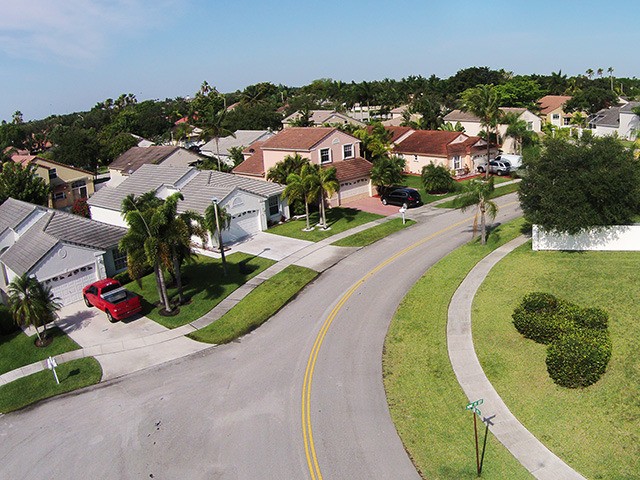Americans must abandon their ambitions to raise their children in suburban greenery because the country is getting too crowded, says a pro-immigration immigrant at the New York Times.
“Let’s Quit Fetishizing the Single-Family Home,” said the headline to an op-ed by columnist Farhad Manjoo in the February 5 edition of the New York Times.
“The reign of the single-family home is over. Whatever its habitable charms and nostalgic appeal, the single-family home is out of step with the future,” Manjoo writes.
That future — according to Manjoo — is the continued immigration of millions of people from India, Africa, China, and elsewhere.
Manjoo writes about his childhood in the “California Dream [of] sun-drenched suburbs” that his father provided in the less-crowded 1980s. “That dream now looks prohibitive: Houses with backyards in my neck of the woods require tech-I.P.O. levels of insane wealth,” he complains.
He cannot afford to give his own children what his father gave him, so he beats his sunny memories into a progressive sword:
And yet, wistful though I may remain for my suburban-sprawl childhood, these days I find myself continually amazed and befuddled by my state’s insane fetishization of an anachronistic model of urban development. Why — when the case for some better way of living has become so painfully obvious — can’t California quit propping up its endless rows of single-family houses? Why can’t so much of America?
Manjoo is one of many young status-seeking progressives who want to abolish the ideal suburbia because they cannot afford to buy housing in fashionable districts. So he wants government to help investors fracture, diversify, split, and subdivide ordinary Americans’ suburbia into affordable mini-homes, duplexes, four-unit apartments, and parking lots.
His demand for suburbia’s death comes after he helped to make suburbia expensive by urging more immigration.
Most migrants are clever and hard-working. So their intense competition for jobs and housing lowers wages and inflates housing prices. The resulting housing crisis is most obvious in Manjoo’s high-migration state of California:
California's poverty rate is worse than Alabama & Mississippi, says Census Bureau. The major cause of this huge change is immigration policy which spikes housing costs & shrinks wages — and delivers huge gains for investors in real-estate & corp. shares. https://t.co/mEjCP83Hkr
— Neil Munro (@NeilMunroDC) September 13, 2019
Manjoo does not entirely break the media taboo against mentioning the harms caused by mass migration. But he gets close by blaming California’s crisis on “too many people”:
In an era constrained by sustainability and affordability, a big house with a backyard should be a rarity. Much of California is straining under its own success: We have too many people and too few places for them to live, offered at too-high prices, in too many areas touched-by-climate-change-related menaces, like wildfires, all too far from where people work. And the solution is so painfully obvious it feels almost reductive to point it out: Make it legal to build more housing that houses more people.
Manjoo is one of the open-borders progressive pundits who helped spike housing prices. “My family came to the United States from our native South Africa in the late 1980s,” Manjoo wrote in January 2019 as he argued for open borders:
Economically and strategically, open borders isn’t just a good plan — it’s the only chance we’ve got. America is an aging nation with a stagnant population. We have ample land to house lots more people, but we are increasingly short of workers.
Manjoo’s self-defeating views are perfume for investors, real estate owners, and employers — including Democrats Tom Steyer and Mike Bloomberg. They have the wealth to profit from any inflow of immigrant consumers, renters and home-buyers, and workers.
A booklet by the investor-funded Economic Innovation Group says:
The relationship between population growth and housing demand is clear. More people means more demand for housing, and fewer people means less demand.
…
As a result, a shrinking population will lead to falling prices and a deteriorating, vacancy-plagued housing stock that may take generations to clear.
…
The potential for skilled immigrants to boost local housing markets is clear. Notably, economist Albert Saiz (2007) found a 1% increase in population from immigration causes housing rents and house prices in U.S. cities to rise commensurately, by 1%.
But Manjoo is a clever pundit who can parlay his self-defeating politics into pleasing rationalizations:
Single-family zoning was one of the many ways white homeowners and politicians kept African-Americans out of suburbs.
…
I don’t feel so bad. Our attached townhouse, on a piece of land a small fraction of the size of a single-family home, is less of a burden on the environment, and it is just the right size for the four of us. It’s also just as loving and pleasant a place for my kids to grow up in as my own suburban manse was for me.
Democrat & billionaire investor Tom Steyer says he will give cheap housing to many illegal migrants (plus jobs etc) – so raising Americans' housing costs.
His private house looks down on SF's Golden Gate bridge. Maybe he is just oblivious to housing costs?https://t.co/QZuykNTFjA— Neil Munro (@NeilMunroDC) January 13, 2020

COMMENTS
Please let us know if you're having issues with commenting.